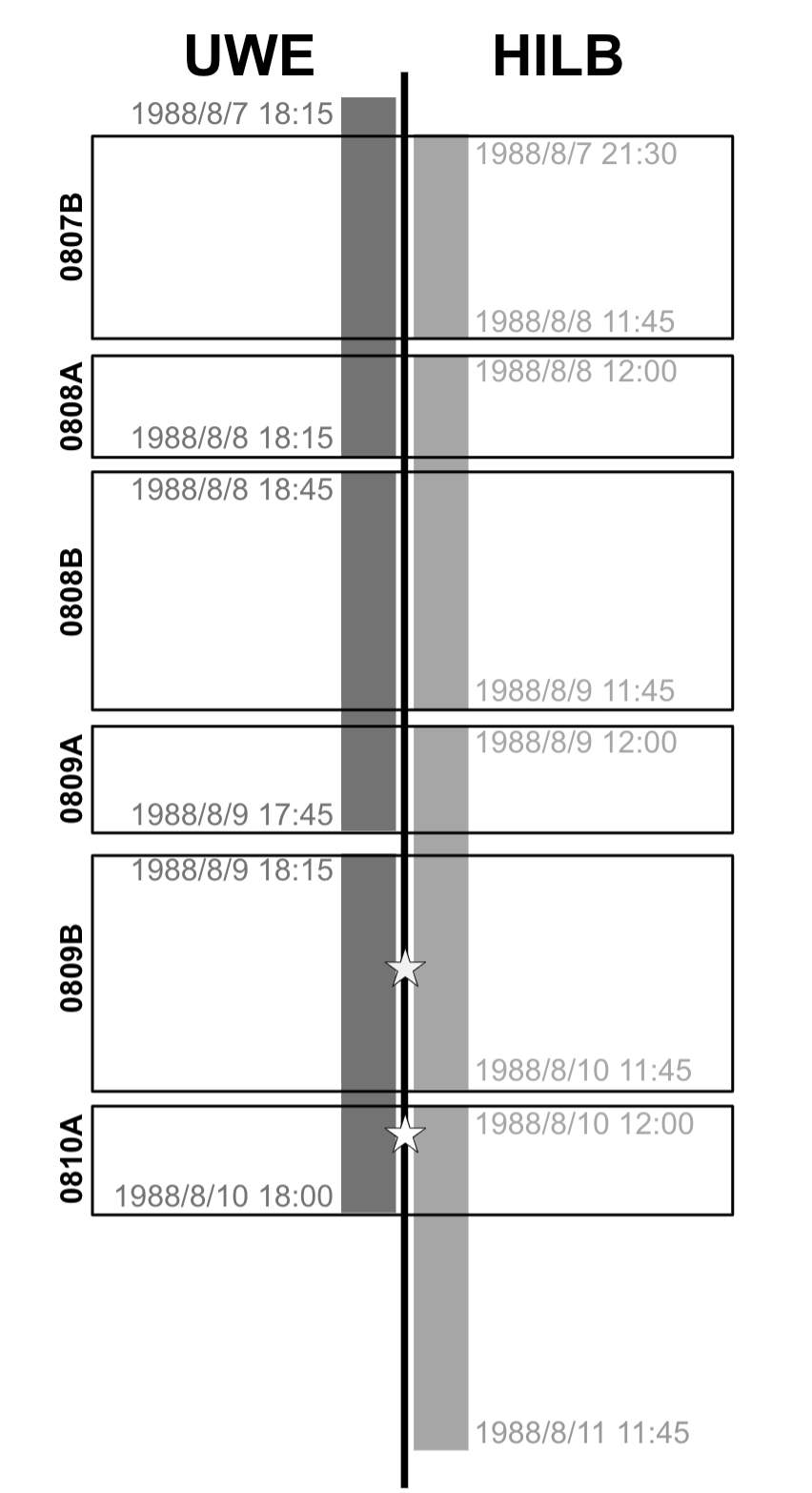Constraining Relative Timing Between Stations Recorded On Analog Seismograms
With modern day technologies such as GPS timing, we often take for granted the synchronization of data across stations and networks. However, this was not the case in the era of analog recording on paper seismograms. During this era, it was usually the case that each instrument had its own clock. Each of these were independent of all other clocks in the sense of being set independently, drifting independently, and being reset independently. As such the relative timing of analog data between stations is quite uncertain.
To better constrain relative timing error in digitized analog records, the inherent symmetry of ambient noise correlations can be utilized. Most analog seismograms span 24 hours and are not necessarily changed over at the same time; as a result, ambient noise correlations must be computed for time windows spanning less than 24 hours. When relative timing offsets are introduced to the time series from which noise correlations are computed, the entire structure will shift towards either the positive or negative time lag. This effectively moves the center of symmetry to the time lag indicating relative timing error (e.g., a center of symmetry at -2.5s would indicate a 2.5s relative timing offset, and a center of symmetry at 0s would indicate no relative timing offset). In order to find this center of symmetry, noise correlations are folded at different time lags and strength of symmetry is inferred from a cross-correlation value for the two sides (Figure 1).
When this method is applied to several days of digitized analog data from two stations (Figure 2, data can be found here) recorded in August 1988 on the Hawaiian Volcano Observatory (HVO) network, time corrections ranging up to about 6 seconds are obtained (Table 1). Additionally, the time corrections obtained from examining cross-correlation symmetry are compared to those obtained from considering the difference in arrival times of two very similar events (at teleseismic distance) at the same two stations, one event occuring during the analog era in question, and the other occuring during the well-timed modern era.
The data used in this study(both scanned analog seismograms and SAC files resultant from their digitization) can be found here in the Historical Seismograms and Digitization section of the Resources page.
This research has been presented as:
Lee, T., M. Ishii, and P. Okubo (2019, submitted). Relative Time Corrections for Analog Seismograms via Use of the Single Day Ambient Noise Correlation Function, submitted to the Bulletin of the Seismological Society of America.
Lee, T., M. Ishii, and P. Okubo (2019). Relative Time Corrections for Digitized Analog Seismograms via the Noise Correlation Function, presented at 2019 Annual Meeting, AGU, San Francisco, CA, 9-13 Dec.
Lee, T., and M. Ishii (2019). Relative Time Corrections for Digitized Analog Records, presented at Securing Legacy Seismic Data to Enable Future Discoveries, NSF Supported Workshop, Albuquerque, NM, 18-19 Sep.
Lee, T., M. Ishii, and P. Okubo (2018). Consistent inconsistencies: A new method for assessing time corrections needed for analog seismograms, Poster M1 presented at 2018 Workshop, IRIS, Albuquerque, NM, 12-14 Jun.


